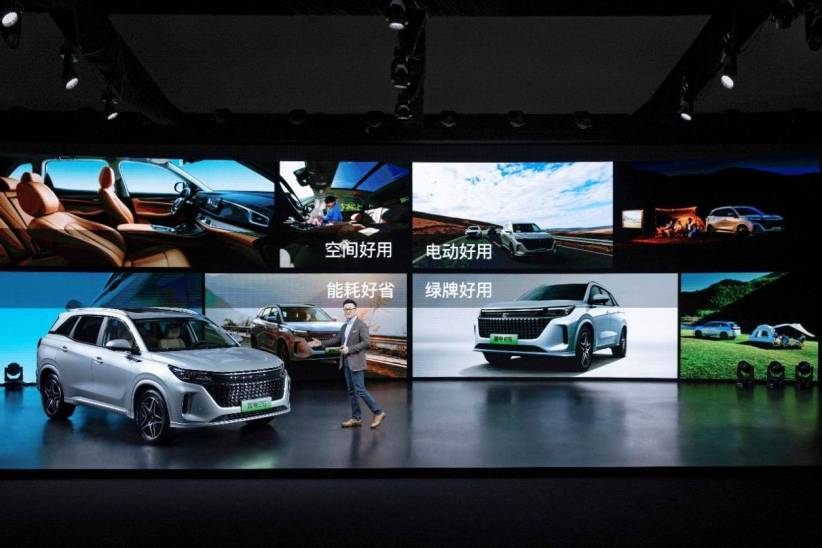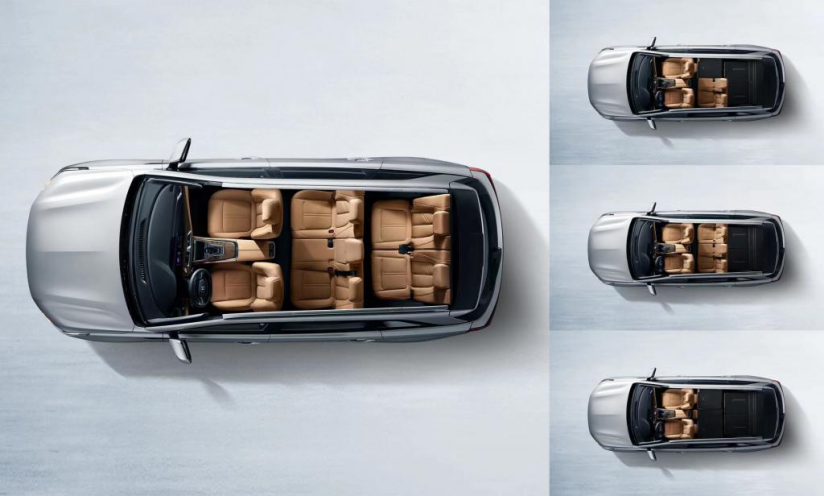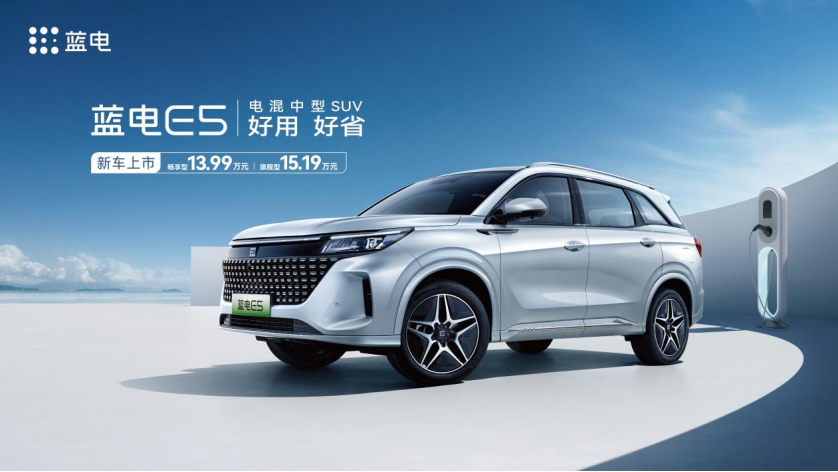Author | Rui-Chen Zhang
Editor | Pan Tan
On March 30th, Chongqing Seres Blue Electric, a subsidiary of Seres Group, launched its new new-energy vehicle brand – Blue Electric. Furthermore, the first model of the Blue Electric brand, Blue Electric E5, was officially launched. Blue Electric E5 is a plug-in hybrid vehicle positioned as a mid-size SUV, with two configuration prices of 139,900 yuan and 151,900 yuan.
Seres’ “Huawei content” is too high, seeking a way out?
Huawei doesn’t make cars, but it gradually takes control of the Wanjie brand through Seres, with Wanjie’s “Huawei content” skyrocketing and renaming itself as “HUAWEI Wanjie” not long ago. Perhaps in order to break free from Huawei’s shackles, Seres has also begun its own Plan B.
However, in response to Wanjie changing its name to “HUAWEI,” Huawei officially released an EMT resolution document on the morning of March 31st, signed and issued by Huawei founder and CEO Ren Zhengfei, reiterating Huawei’s commitment to not making cars and setting the resolution period at 5 years. The announcement emphasized not using “Huawei, HUAWEI” on vehicle promotions and exteriors, which means that the renamed “HUAWEI” Wanjie will no longer use “Huawei Wanjie or HUAWEI AITO”.
In addition, at the 2022 annual report conference held by Huawei on the afternoon of March 31st, Huawei’s rotating chairman Xu Zhijun said: “The resolution is valid for only 5 years, not limited to within 5 years, but the document’s validity period is up to 5 years. After 3 years, another 5-year resolution will be issued, and after 5 years, another 5-year resolution will be issued.” This proves that Huawei really will not enter the car manufacturing field, but it does not mean that it will not pose a threat to existing car manufacturers.
Why does Seres want to create a new brand?
In fact, Xiaokang Group has laid out the new energy field as early as 2017 and founded the new energy brand SERES, which was later renamed Seres Group in 2022. During this period, Seres SF5, Wanjie M5, and Wanjie M7 have been successively released.
Unfortunately, the dismal sales forced Seres to turn its attention to Huawei, which was a major player at the time. After joining hands with Huawei, the Wanjie series of models reversed the tragic sales situation of Seres SF5, but in the hearts of consumers, the impression of Seres gradually faded, and Huawei took the spotlight instead. Seres was even once referred to as Huawei’s “OEM factory” for car manufacturing.Under the empowerment of Huawei, Wenjie models achieved immediate success with annual deliveries of 75,000 new vehicles in 2022, setting the record for the fastest sales of a new force to exceed 10,000. However, sales of Wenjie models declined continuously in 2023. In January this year, Wenjie’s sales were only 4,475 units, a 55.88% decrease from the previous month, while in February, only 3,535 new vehicles were delivered in the context of overall vehicle market recovery. The total sales for the first two full months of this year were even lower than the performance in December last year.
Both SAILUS and Huawei have noticed the weakening performance of Wenjie’s momentum in the later stages. To reverse the decline, Huawei has adjusted the slogan for the Wenjie brand to “Fully Dominated by Huawei” to strengthen consumer recognition and leverage Huawei’s brand advantage to boost sales.
As for SAILUS, it has gradually lost control of the Wenjie brand, and the balance between Huawei and SAILUS is being broken. In fact, before Wenjie officially changed its name to “HUAWEI,” Huawei stores had already referred to the Wenjie M5 and M7 as Huawei vehicles. Therefore, SAILUS seemingly needs to regain its market share with the new brand, Bluelectric. However, whether Bluelectric can succeed with a new brand, new models or new channels after decoupling from Huawei remains uncertain.

How does the Bluelectric E5 perform in terms of product capabilities?
SAILUS has established the new Bluelectric brand, which symbolizes its intention to create its own brand of electric passenger vehicles once again. However, the Bluelectric E5 still relies on external technologies for core components, a similarity shared with Huawei’s early entry into the automotive industry – using others to achieve its goals. For instance, the Bluelectric E5 has two highlights: adopting BYD’s Fudi hybrid system and integrating the HUAWEI HiCar 3.0 system.
In terms of appearance, the seemingly seamless integration of the front and headlight assembly gives the Bluelectric E5 a certain degree of distinctiveness. Although its overall aesthetic isn’t as avant-garde as many emerging automakers, the modest exterior design won’t detract from the E5’s appeal. The “E”-shaped logo on the front of the vehicle is inspired by the English word “Electric.” As Bluelectric explains: “Based on the letter ‘E,’ we have created a unique blue dot matrix pattern by incorporating the concept of the Internet of Everything, aiming to become a builder of the interconnected ecosystem in the electric era.”
In terms of dimensions, the BluE5 measures 4760/1865/1710mm in length, width, and height, respectively, with a wheelbase of 2785mm. While such dimensions are not outstanding among midsize SUVs, they are in line with the BluE5’s positioning as a midsize SUV.
Inside, the BluE5 adopts a full liquid crystal dashboard + central control large screen connected display design, with a decent performance in space layout optimization. The interior space conversion rate can reach up to 90.63%. The highlight of the cabin is the HUAWEI HiCar 3.0 infotainment system, which significantly enhances the user experience in terms of human-machine interaction, navigation, operation, and functionality.

As mentioned earlier, another highlight of the BluE5 is its power performance. BYD’s DiLink e-hybrid technology consists of a 1.5L PHEV engine and DHT300 e-hybrid system, delivering a maximum engine power of 81kW and a maximum torque of 135N・m, along with a maximum electric motor power of 130kW and a maximum torque of 300N・m. The 0-100km/h acceleration can be achieved in as fast as 7.4 seconds.
Regarding range, the BluE5 comes in two versions: the Enjoy version with 100km NEDC pure electric range and the flagship version with 110km. The WLTC pure electric ranges are 87km and 94km, respectively. It is worth noting that the two models use different battery cell brands, with the 100km Enjoy version featuring Guoxuan High-Tech battery cells and the 110km flagship version using Farasis Energy.
Final thoughts:
As a plug-in hybrid model starting at 139,900 yuan, equipped with HUAWEI HiCar 3.0 system and BYD’s DiLink e-hybrid technology, the BluE5 not only reinforces consumers’ recognition of the Blu brand but also exhibits a strong product performance. It is understood that purchasing the BluE5 now comes with multiple car purchase benefits, such as a 10,000 yuan discount for the first 10,000 users who pay a deposit of 1,000 yuan; a 4,000 yuan trade-in fund and up to a 6,000 yuan financial discount. Furthermore, adding 2,000 yuan allows for an upgrade to the 7-seater version. However, don’t get your hopes up in terms of space for the 7-seater with a 2785mm wheelbase.
Whether Cyres can regain its rightful position in the automotive industry through the creation of an independent brand and the subsequent performance of Blue-E E5 remains to be seen.
This article is a translation by ChatGPT of a Chinese report from 42HOW. If you have any questions about it, please email bd@42how.com.
